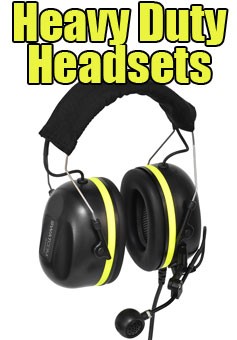
Working in environments with loud machinery can pose significant risks to one's hearing. Prolonged exposure to high noise levels can lead to permanent hearing loss and other auditory issues. Therefore, investing in effective ear protection is crucial for maintaining auditory health and ensuring long-term well-being.
Whether you work in construction, manufacturing, or any industry involving heavy machinery, selecting the right ear protection can make a considerable difference. In this guide, we'll explore some of the best ear protection options available, helping you to make an informed decision to safeguard your hearing.
UK Law
When working with loud machinery, it is essential to ensure the safety and well-being of employees by providing appropriate ear protection. According to UK law, if the daily noise level reaches 85dB(A), employers are not only required to provide ear protection but also ensure that it is worn correctly.
It is the responsibility of the employer to maintain the ear protection in good condition and to clearly mark ear protection zones where it is mandatory. By adhering to these regulations, employers can significantly reduce the risk of hearing damage among their workers and promote a safer working environment.
Loud Machinery
Working in environments with loud machinery, such as construction sites, manufacturing plants, and workshops, can expose individuals to dangerously high levels of noise. Prolonged exposure without adequate ear protection can lead to irreversible hearing loss.
Therefore, selecting the right type of ear protection is paramount. There are various types of ear protection available, including earplugs, earmuffs, and custom-moulded ear protection.
Types of Ear Protection
- Earplugs: These are small devices inserted into the ear canal. They come in disposable, reusable, and custom-moulded varieties, offering a convenient and effective way to reduce noise levels. Disposable earplugs are often made of foam or silicone and expand inside the ear to block out noise. Reusable earplugs are typically made from more durable materials and can be washed and reused multiple times.
- Earmuffs: These consist of two cushioned ear cups that cover the entire ear and are connected by a headband. Earmuffs provide a higher level of sound attenuation and are suitable for environments with extremely high noise levels. They are adjustable and can be worn over the head or behind the neck, making them versatile for different working conditions.
- Custom-Moulded Ear Protection: These are made from impressions of the individual's ears, ensuring a perfect fit. Custom-moulded ear protection provides superior comfort and noise reduction, making them ideal for long-term use in high-noise environments. They are more expensive but offer the best combination of protection and comfort.
Choosing the right ear protection is crucial for maintaining auditory health in noisy work environments. Employers should assess the specific needs of their workforce and provide ear protection that meets the noise reduction requirements and comfort preferences of their employees. By doing so, they can help prevent noise-induced hearing loss and ensure a safer, more productive workplace.
Impact of Noise at Work
Noise at work can cause both temporary and permanent hearing damage, which can be highly disabling. This damage can either develop gradually due to prolonged exposure to noise or occur suddenly from an extremely loud noise.
Many individuals experience temporary deafness after leaving a noisy environment; although hearing typically recovers within a few hours, this should not be dismissed. It serves as a warning sign that continued exposure to high noise levels could lead to permanent hearing damage.
Such damage can be disabling to the extent that it hinders a person's ability to understand speech, maintain conversations, or use the telephone effectively.
Communications
Noise at work can interfere with communications and make warnings harder to hear, which can significantly reduce a person's awareness of their surroundings. These factors not only create safety risks but can also lead to serious injuries or even fatalities. Effective communication is crucial in work environments to ensure that everyone is aware of potential hazards and can respond promptly to emergencies.
When noise levels are high, important instructions and alerts may go unnoticed, resulting in catastrophic consequences. Therefore, managing noise levels and implementing proper hearing protection measures are essential to maintaining a safe workplace.
Identifying a Loud Noise
One effective method to identify potentially harmful noise levels at work is to observe whether employees have to raise their voices to hold a conversation when standing about 2 metres apart. If this occurs for any part of the day, the noise levels are high enough to warrant concern.
Moreover, the use of noisy powered tools or machinery for more than half an hour daily can significantly contribute to noise exposure. Such conditions necessitate the implementation of appropriate noise control measures and hearing protection to safeguard the well-being of employees.
Regular noise assessments and monitoring can help in identifying these situations and taking prompt action to mitigate the risks associated with prolonged exposure to loud noise.
-

3M Peltor Electronic Earplug
3M PELTOR Electronic Earplugs protect your hearing from sudden loud (impuls...
-

Bluetooth Ear Defenders
Key Features: Wireless Connectivity: Easily connect to your smartphone via...
-

Shooting Ear Defenders
The Shooting Ear Defenders are highly effective, offering an SNR of 27dB fo...
-

Peltor Ear Defenders
these Peltor ear defenders are engineered for maximum comfort and durabilit...
-

Adult Ear Defenders
Small: Offers a protection level up to 24db, suitable for moderate noise e...
-

Flare EarShade Earplug
Earshade® offers a unique, comfortable, and customizable experience with i...



























